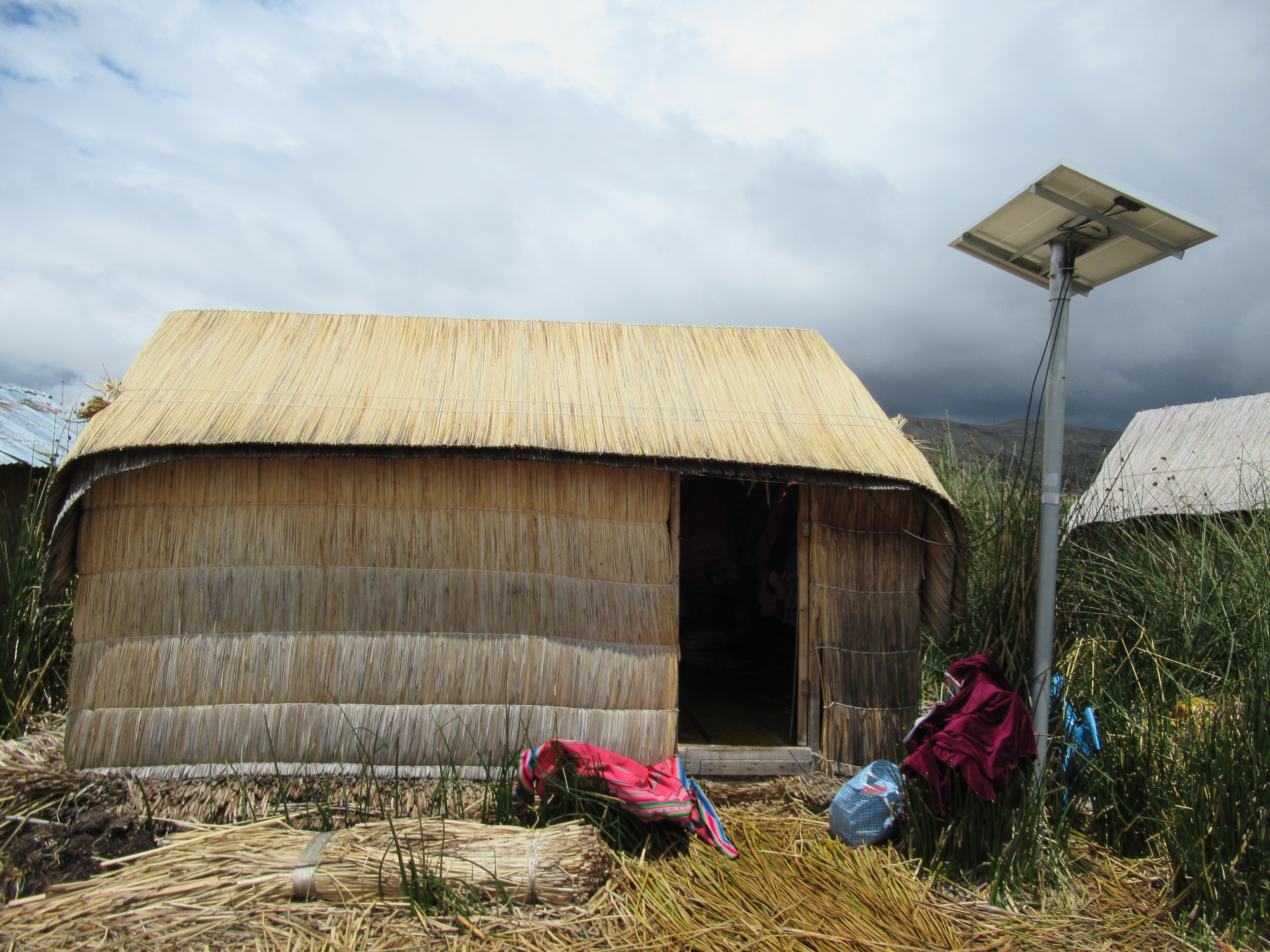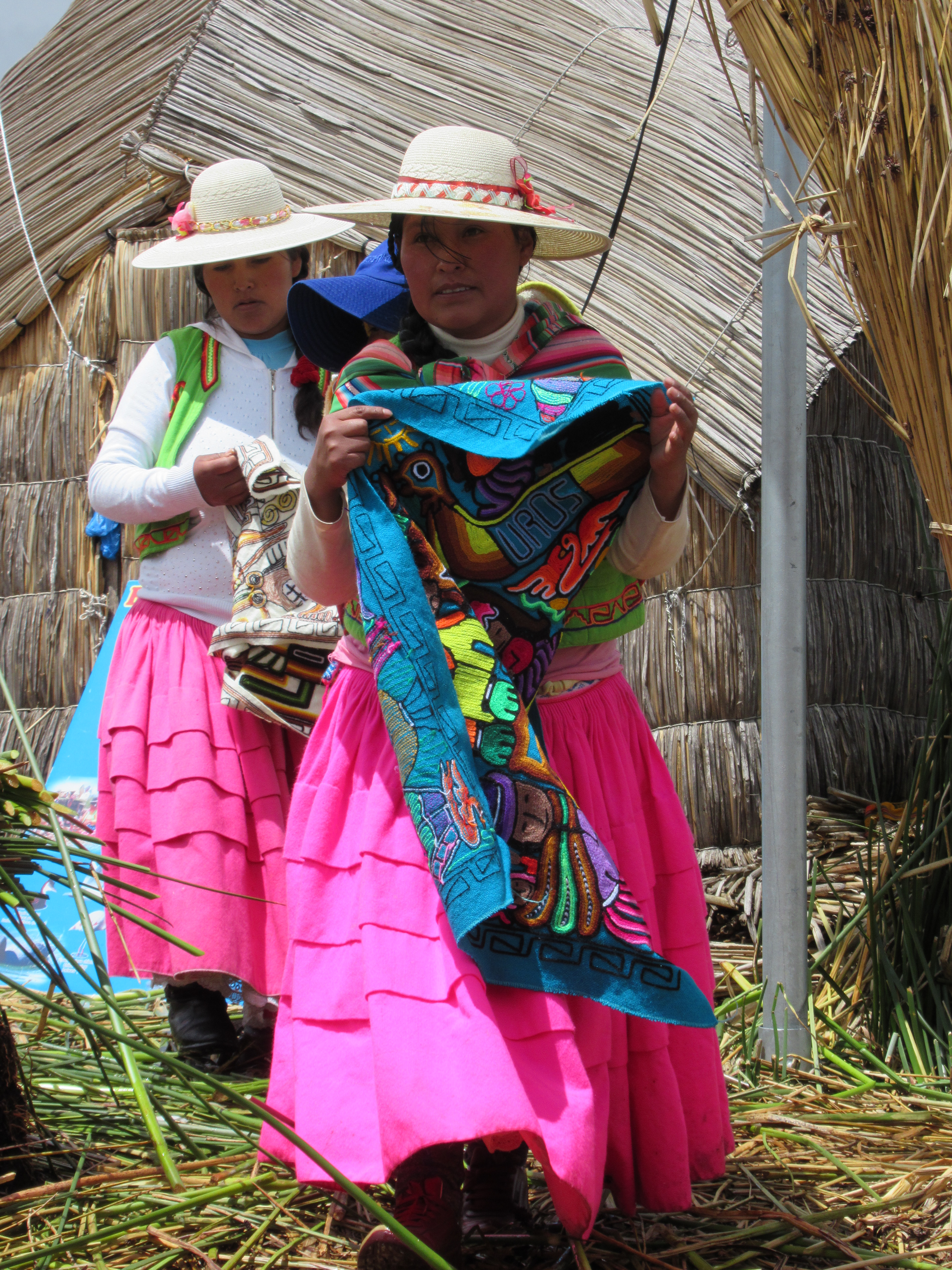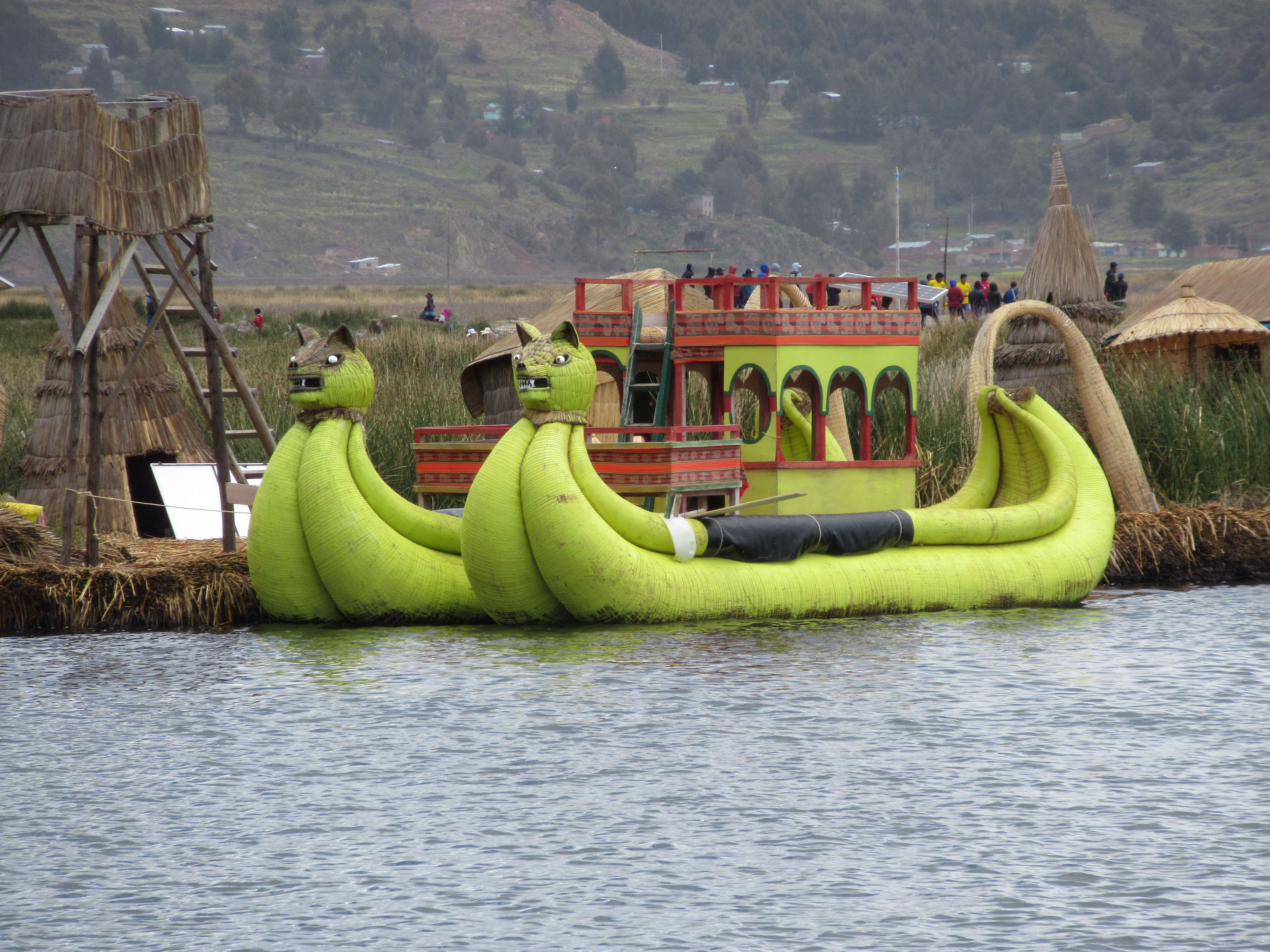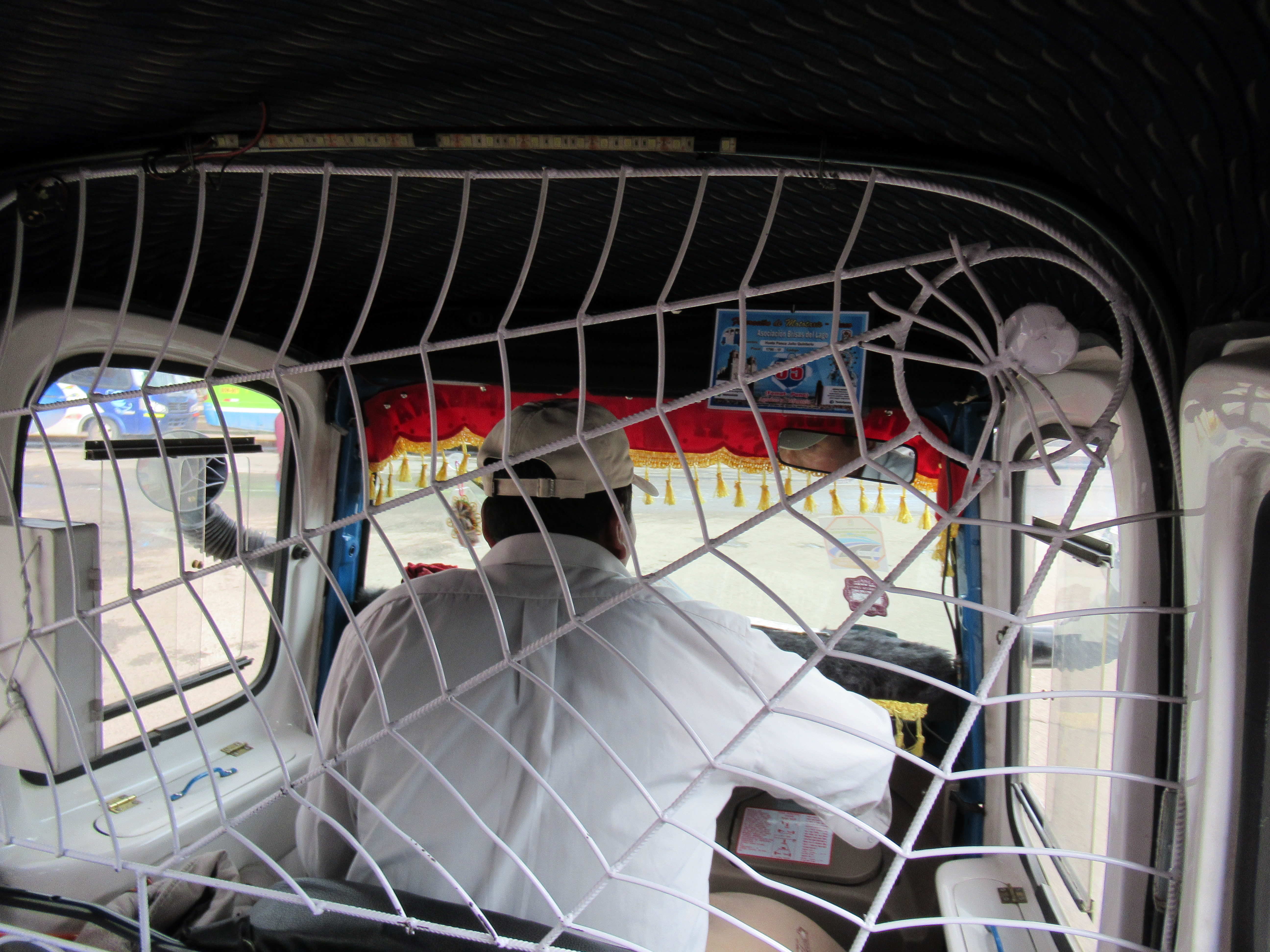Sunday, 3 February 2019
Puno, Peru
Plenty of tour boats as we chug along a channel through the reeds to the Uros floating reed islands on Lake Titicaca. The channel has been created by dredging and a solid island of mud has been formed which is the local football pitch. There’s a match on, which explains where all the men are.
Land on a reed island, one of many individual islands housing different families. The first thing that hits you is the smell of rotting reed. The chief of the island is a woman. Always a woman on these islands. She explains that the island is created thus. They saw off sections of reed root from various parts of the lake and tow the sections to where they want to live. The root section is about 2m deep and is tethered to other sections to create a larger island. On top of this they put horizontal layers of reed down, to give a further 1m depth. The whole base being 3m thick. The island is anchored to the lake bed using rocks at eight anchor points. To stop it floating off into Bolivia. Once the base is laid, they invite their friends over to play games and generally trample the reed layers down to give it a firmer feel. Once that’s done, they build their huts out of reed and place them on drier base of reed to stop the damp getting through. An outside clay oven and cooking pots sit on a piece of stone to stop the whole lot going up in flames in the drier months. There’s no chance of that happening today as too much rain overnight.
The reed hut is quite small, about 5m x 3m, and contains a bed at one end, made of, you’ll never guess, reed. A bundle of reeds provide a bench to sit and at the end of the bed is a small square TV, the sort you might have had in the 1980s. Along the walls, brightly coloured clothes hang. No sign of any heating and as there are plenty of gaps in the walls and roof, they must be a hardy bunch and glad I’m not staying there on a windy night.
Last came here in 2001 and don’t recall them having power or sanitation. Now, each hut has a solar panel to provide power for the TV and a couple of lightbulbs in the hut. Each island also seems to have its own floating bathroom with metal pontoons acting as storage for waste.
Very bouncy and squidgy walking on the reed island. There are 5 families living on the island, 20 people in total, each family having their own hut. Treated to a song in the local dialect of Quechua (see video). The girls wearing their brightly coloured cardigans and skirts.
My niece’s 20th birthday today. Can’t quite believe she’s 20. Seems like only yesterday I was holding her in my arms. Technology never ceases to amaze me. Manage to video chat with each other. Me on a floating reed island in the middle of Lake Titicaca in Peru. She in Ironbridge, England, with family and her ‘friend’. Not a boyfriend. Just a ‘friend’. He’ll have to pass the Uncle suitability test before he achieves ‘boyfriend’ status. Which reminds me of a story my Northern Irish, brought up in the Bogside in Londonderry during the Troubles, colleague told me once. His daughter brought a boyfriend home and before he’d even crossed the threshold had been punched in the chest by said colleague and warned that if he did anything he shouldn’t do he’d be punched again…but harder.
Happy birthday dear niece.
Board a reed boat sculpted like a dragon boat for a slow, serene, sail around the main waterway. Fascinating to see how they live. Very basic living.
Back in Puno, there’s a carnival. Guide has warned to look after wallets and cameras. If a local tells you that, it must be bad. Walk about with hands in pockets fingers on my crown jewels: wallet, passport, phone, camera.
In need of a pee, pay a few pence to use the public toilets. Given three sheets of toilet paper. Only need a pee but if you need a number 2 then once you’ve done the business in your cubicle, you need to go to one of three large barrels in the middle of the toilet area and scoop a bucket of water up to flush it away.
Walk the streets of Puno to the stadium in the centre of town. Loads of locals selling all sorts from their roadside stalls, corn on the cob, BBQ chicken, jelly and cream. Thousands of people have come here in their own groups to sing, dance and play music as the proceed through the streets into the stadium, out again and along the main route through the town centre. All are wearing brightly coloured clothes and bowler hats. Great atmosphere. Ask to take various photos and they all pose nicely. Along each side of the procession are what can best be described as ‘boxes’. Areas of a few plastic seats with a metal frame and polythene protecting the spectators from the frequent rain showers.
One of the groups appear to be doing what appears to be similar to British barn dancing and a group of men are all wearing face masks with funny, serious and grizzly features.
A large black cloud looms so search for a taxi back to the hotel, passing a concrete helter skelter in the grassy area between two carriageways. Stop at a little corner shop to buy some water and upon saying ‘Gracias’ as she passed me the carrier bag, she replies, “You’re welcome.”
Have seen little white and blue tuk-tuk type taxis pootling around town. Decide that’ll be a fun mode of transport so flag one down. It’s a tight fit in the all enclosed cabin. A metal frame in the shape of a spider’s web separates driver from passenger. Enroute to the hotel, have to drive through a deep and long puddle. Driver is not convinced his little tuk-tuk will make it and keeps muttering to himself, “Agua…agua…agua”, with an intake of breath between each “agua”. Slow progress through that puddle.











































